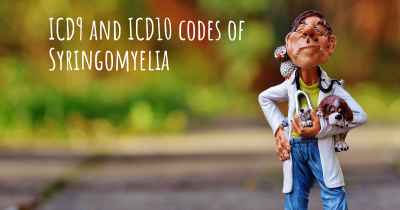What are the latest advances in Syringomyelia?
Here you can see the latest advances and discoveries made regarding Syringomyelia.

Syringomyelia is a rare neurological disorder characterized by the formation of fluid-filled cavities within the spinal cord. These cavities, known as syrinxes, can cause a range of symptoms including pain, weakness, sensory loss, and dysfunction of the autonomic nervous system. While there is no cure for syringomyelia, significant advances have been made in understanding the condition and improving treatment options.
Improved Diagnostic Techniques
One of the key advancements in syringomyelia is the development of improved diagnostic techniques. Magnetic Resonance Imaging (MRI) has revolutionized the diagnosis of syringomyelia by allowing detailed visualization of the spinal cord and syrinxes. High-resolution MRI scans can accurately identify the location, size, and extent of syrinxes, aiding in treatment planning and monitoring disease progression.
Advances in Surgical Interventions
Surgery plays a crucial role in managing syringomyelia, and recent advances have expanded treatment options for patients. The most common surgical procedure is decompression surgery, which involves removing obstructions and creating space for the cerebrospinal fluid to flow freely. This can be achieved through various techniques such as laminectomy, duraplasty, or syrinx shunting.
Intramedullary syrinx surgery is another promising technique that aims to directly address the syrinx itself. This procedure involves draining the syrinx and removing any associated obstructions within the spinal cord. While still in its early stages, this approach shows potential in reducing syrinx size and improving symptoms.
Advancements in Non-Surgical Treatments
While surgery remains the primary treatment for syringomyelia, non-surgical interventions have also seen advancements.
Pharmacological therapies have been explored to manage symptoms and slow down disease progression. Medications such as non-steroidal anti-inflammatory drugs (NSAIDs), pain relievers, and muscle relaxants can help alleviate pain and improve quality of life for patients.
Physical therapy and rehabilitation have gained importance in the management of syringomyelia. These interventions focus on improving muscle strength, flexibility, and overall physical function. Physical therapists can design personalized exercise programs to address specific symptoms and enhance mobility.
Advances in Research
Ongoing research efforts are expanding our understanding of syringomyelia and paving the way for future advancements. Scientists are investigating the underlying causes of syrinx formation, including genetic factors and abnormalities in cerebrospinal fluid dynamics. This knowledge may lead to targeted therapies and preventive measures in the future.
Regenerative medicine holds promise for syringomyelia treatment. Stem cell research and tissue engineering techniques are being explored to develop strategies for repairing damaged spinal cord tissue and promoting nerve regeneration. While still in the experimental stage, these approaches offer hope for potential future treatments.
Enhanced Patient Support and Awareness
Advances in technology and communication have greatly improved patient support and awareness for syringomyelia. Online communities, support groups, and social media platforms provide platforms for patients, caregivers, and healthcare professionals to connect, share experiences, and access valuable information. Increased awareness of syringomyelia has also led to improved recognition and earlier diagnosis of the condition.
In conclusion, significant progress has been made in understanding and managing syringomyelia. Improved diagnostic techniques, advancements in surgical and non-surgical treatments, ongoing research, and enhanced patient support have all contributed to better outcomes for individuals living with this condition. While there is still much to learn, these latest advances offer hope for improved quality of life and future breakthroughs in the field of syringomyelia.
Posted Mar 22, 2018 by Tammie 4000
Posted Sep 20, 2018 by Austyn 3500








